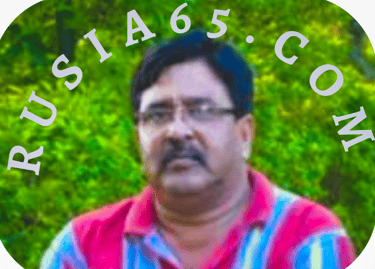Exploring Russia: A Journey Through History and Culture in 1965
Dive into the rich tapestry of Russian history in 1965. Discover significant events, cultural milestones, and daily life during this pivotal year. Perfect for history enthusiasts and travelers alike, this blog offers insights into a unique era of Russia's past, along with travel tips for exploring its wonders.


Exploring Russia: A Journey Through History and Culture in 1965
In the mid-1960s, the Soviet Union stood at a crossroads—caught between the rigid doctrines of Stalinism and the tentative reforms of the Khrushchev era. For a traveler arriving in Russia in 1965, the country offered a fascinating, if complex, portrait of a society shaped by revolution, war, and ideology. This was a time of quiet transformation, where the echoes of history reverberated through ancient cathedrals, bustling city squares, and the daily lives of ordinary citizens. Let us take a journey through Russia in 1965—a year that captured both the enduring spirit of a nation and the stirrings of change.
A Nation in Transition
By 1965, Nikita Khrushchev had been ousted from power, and Leonid Brezhnev had assumed leadership, marking the beginning of what would later be known as the "Era of Stagnation." Yet, in that pivotal year, there was still a lingering sense of hope and openness, particularly in cultural spheres. The Thaw—a period of relative liberalization initiated by Khrushchev—had allowed for a modest flourishing of the arts, literature, and intellectual debate, and its influence could still be felt in Moscow’s theaters, Leningrad’s (now St. Petersburg) galleries, and university lecture halls.
Travelers in 1965 would have noticed the contrast between the state’s official narrative and the subtle undercurrents of dissent and creativity. While propaganda posters adorned metro stations and statues of Lenin stood sentinel in city centers, underground poetry readings and jazz clubs offered alternative spaces for expression.
Moscow: The Beating Heart of the USSR
Moscow in 1965 was a city of contradictions. The skyline was dominated by the golden domes of St. Basil’s Cathedral and the imposing spires of the Kremlin, standing in stark contrast to the utilitarian apartment blocks that housed much of the population. Red Square remained the symbolic heart of Soviet power, where military parades celebrated the might of the Red Army and the triumphs of socialism.
Yet beyond the political façade, Moscow pulsed with cultural life. The Bolshoi Theatre continued to draw packed audiences for its world-renowned ballet and opera performances. The Pushkin Museum and the Tretyakov Gallery offered visitors a deep dive into Russia’s artistic legacy, from medieval icons to the works of Repin and Kandinsky.
For foreign tourists—still a rare sight in the Soviet Union—travel required careful planning. Most visitors arrived through Intourist, the state-run travel agency, which provided guided tours and strictly regulated movement. Despite the restrictions, those who ventured off the beaten path found warm hospitality and curiosity among locals eager to practice foreign languages and learn about the outside world.
Leningrad: A Window to Imperial Russia
A train journey from Moscow to Leningrad on the newly modernized rail lines offered a glimpse into Russia’s imperial past. Once the capital of the Russian Empire, Leningrad retained an air of elegance and melancholy. The city had barely recovered from the horrors of the Siege of Leningrad during World War II, and the scars of war were still visible in the architecture and the memories of its people.
The Hermitage Museum, housed in the opulent Winter Palace, was a must-see destination. With its vast collection of European masterpieces—works by Rembrandt, Leonardo da Vinci, and Matisse—it stood as a testament to Russia’s deep cultural connections with the West, even during the Cold War.
Strolling along the Neva River, past the majestic St. Isaac’s Cathedral and the Admiralty building, one could almost hear the echoes of Dostoevsky and Pushkin. The city’s literary cafés and music halls hosted performances of Tchaikovsky and Shostakovich, whose music—sometimes censored, always powerful—spoke to the soul of the nation.
The Russian Soul: Faith, Family, and Folklore
Despite decades of state-enforced atheism, spirituality endured in rural villages and quiet corners of cities. In 1965, many Russians still observed Orthodox traditions in secret, lighting candles in hidden home altars or making pilgrimages to surviving churches. The onion domes of rural chapels dotted the countryside, standing as silent witnesses to a faith that refused to be extinguished.
Folk culture also thrived. Traditional music, dance, and crafts were preserved through state-sanctioned ensembles like the Moiseyev Dance Company, which toured internationally, presenting a vibrant, colorful image of Russian heritage. In villages across the countryside, generations passed down songs and stories that spoke of love, loss, and the vast, often unforgiving beauty of the Russian landscape.
A Glimpse of the Future
1965 was not just a year of reflection—it was also a year of anticipation. The Soviet space program was in full stride, with cosmonauts like Alexei Leonov making history through the first spacewalk just a year earlier. In cities, young people listened to smuggled records of The Beatles and Bob Dylan, dreaming of a world beyond the Iron Curtain.
For those who traveled to Russia in 1965, the experience was more than a tour of monuments and museums. It was an encounter with a people shaped by centuries of triumph and tragedy, resilience and hope. Beneath the surface of Soviet uniformity, the Russian spirit—deep, complex, and indomitable—continued to thrive.
Final Thoughts
To explore Russia in 1965 was to witness a nation at a delicate moment in time—balancing pride in its past with uncertainty about its future. It was a land where history was not just remembered but lived, where culture served as both a refuge and a form of resistance. For the curious traveler, it offered not only breathtaking sights but profound insights into the enduring power of human creativity and identity.
Though the Soviet Union has since dissolved, the Russia of 1965 remains a compelling chapter in the story of a country that continues to captivate the world.
